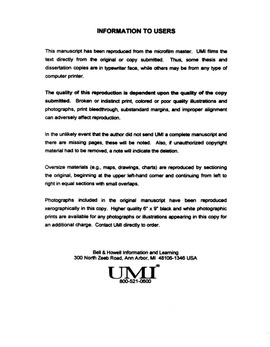| dc.contributor.advisor | Droegemeier, Kelvin, | en_US |
| dc.contributor.author | Richardson, Yvette Pamela. | en_US |
| dc.date.accessioned | 2013-08-16T12:30:47Z | |
| dc.date.available | 2013-08-16T12:30:47Z | |
| dc.date.issued | 1999 | en_US |
| dc.identifier.uri | https://hdl.handle.net/11244/5899 | |
| dc.description.abstract | Severe storms are typically simulated assuming either an idealized, horizontally homogeneous environment or an observed inhomogeneous environment. These represent opposite ends of the spectrum, and both have limitations with regard to our understanding of severe storms. Conclusions drawn from the former are difficult to generalize because real storms often move through environments that exhibit considerable spatial variation. Real data experiments, on the other hand, include these variations but are so inherently complex that meaningful conclusions about basic storm responses to any one factor in the environment are difficult to construct. | en_US |
| dc.description.abstract | In particular, I show results in which the low-level moisture varies meridionally in an environment with westerly shear. The resultant preferred evolution of the storm system toward the higher moisture region and the differences between high and low shear cases are examined. | en_US |
| dc.description.abstract | In the results presented, simulations in the inhomogeneous domain are compared to control simulations of storms in homogeneous environments using soundings taken from different locations in the inhomogeneous domain. Both multicell and supercell storms are found to respond to changes in their environment. The response of key storm attributes, such as updraft strength and mid and low level vorticity, to this change are presented. | en_US |
| dc.description.abstract | Simulations in which the vertical shear varies spatially also are presented. In the most interesting case, an idealized environment is constructed such that a multicell storm system moves into a region of much stronger shear over its lifetime. The storm system is found to change from a weak cell regime to a bow echo regime over its lifetime as it experiences increasing vertical shear. | en_US |
| dc.description.abstract | In this study, horizontal variations in vertical shear and low-level moisture are included in an idealized manner so that their influence can readily be diagnosed. Simulations are performed using the Advanced Regional Prediction System (ARPS) with significant modification to accommodate the inhomogeneous, but idealized, environmental fields. The need for accurate boundary conditions is a particular challenge. The solutions created to solve these problems will be presented. | en_US |
| dc.format.extent | xvii, 236 leaves : | en_US |
| dc.subject | Applied Mechanics. | en_US |
| dc.subject | Severe storms Simulation methods. | en_US |
| dc.subject | Physics, Atmospheric Science. | en_US |
| dc.subject | Vertical wind shear. | en_US |
| dc.title | The influence of horizontal variations in vertical shear and low-level moisture on numerically simulated convective storms. | en_US |
| dc.type | Thesis | en_US |
| dc.thesis.degree | Ph.D. | en_US |
| dc.thesis.degreeDiscipline | School of Meteorology | en_US |
| dc.note | Adviser: Kelvin Droegemeier. | en_US |
| dc.note | Source: Dissertation Abstracts International, Volume: 60-11, Section: B, page: 5569. | en_US |
| ou.identifier | (UMI)AAI9952416 | en_US |
| ou.group | College of Atmospheric & Geographic Sciences::School of Meteorology | |
